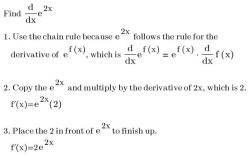How do you calculate the growth rate?
Calculating the growth rate is a common task in various fields, including finance, economics, and business. The growth rate measures the percentage increase or decrease in a quantity over a specified period. To calculate the growth rate, you can use the following simplified formula:
Growth Rate (%) = [(Ending Value - Beginning Value) / Beginning Value] x 100
Here's a step-by-step breakdown of how to calculate the growth rate:
-
Determine the Beginning and Ending Values: Identify the initial value (the starting point) and the final value (the ending point) for the quantity you want to calculate the growth rate for. These values could represent anything, such as sales revenue, population, investment, or stock price.
-
Subtract the Beginning Value from the Ending Value: Subtract the beginning value from the ending value to find the difference. This represents the absolute change in the quantity over the specified period.
-
Divide by the Beginning Value: Divide the absolute change by the beginning value. This step normalizes the change with respect to the initial value, allowing you to express the growth rate as a percentage of the starting point.
-
Multiply by 100: To convert the result to a percentage, multiply the fraction obtained in step 3 by 100.
-
Interpret the Result: The final number you obtain represents the growth rate as a percentage. A positive growth rate indicates an increase in the quantity, while a negative growth rate indicates a decrease.
Let's illustrate this with an example:
Suppose you want to calculate the growth rate of a company's revenue over two years. The revenue was $500,000 at the beginning of Year 1 and $600,000 at the end of Year 2.
Using the formula:
Growth Rate (%) = [(600,000 - 500,000) / 500,000] x 100
Growth Rate (%) = [(100,000) / 500,000] x 100
Growth Rate (%) = 20%
In this example, the growth rate of the company's revenue over two years is 20%, indicating a 20% increase in revenue from the beginning of Year 1 to the end of Year 2.
To calculate the growth rate, you can use the following formula:
Growth rate = (Change in value / Original value) * 100%
For example, if you have a company that had $100,000 in revenue last year and $120,000 in revenue this year, then the growth rate would be calculated as follows:
Growth rate = (20,000 / 100,000) * 100% = 20%
This means that the company's revenue grew by 20% from last year to this year.
Growth rate can be calculated for any type of value, such as revenue, sales, profits, or traffic. It is a useful metric for measuring the performance of a business or other organization over time.
Here are some tips for calculating growth rate:
- Make sure that the values you are using are comparable. For example, if you are calculating the growth rate of revenue, you should use revenue from the same period of time for both years.
- Be aware of the different types of growth rate. There are two main types of growth rate: absolute growth rate and percentage growth rate. Absolute growth rate is the difference between the two values, while percentage growth rate is the absolute growth rate divided by the original value and multiplied by 100%.
- Use a calculator or spreadsheet to calculate growth rate. This will help you to avoid errors.
Calculating growth rate can be a helpful way to measure the progress of your business or organization over time. By tracking your growth rate, you can identify areas where you are excelling and areas where you need to improve.











